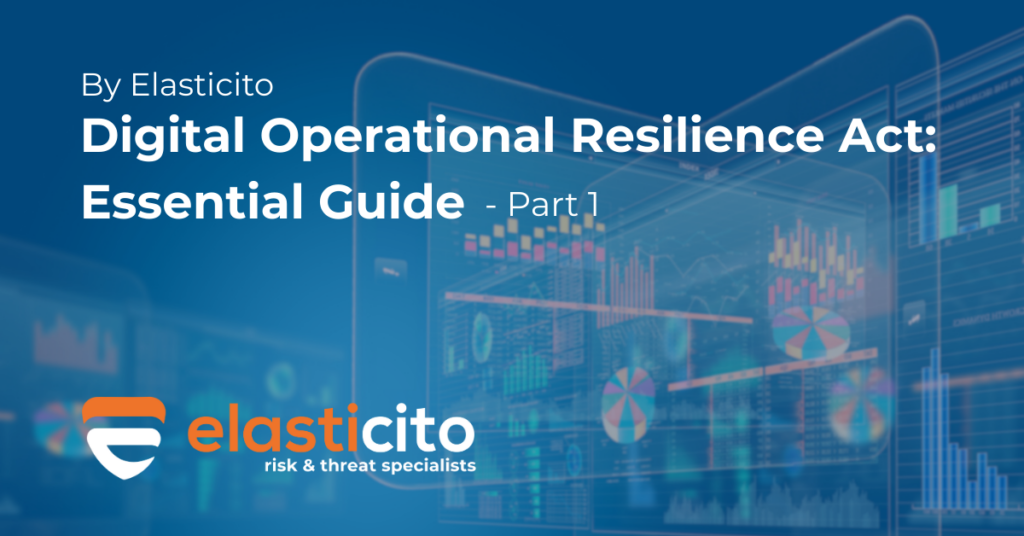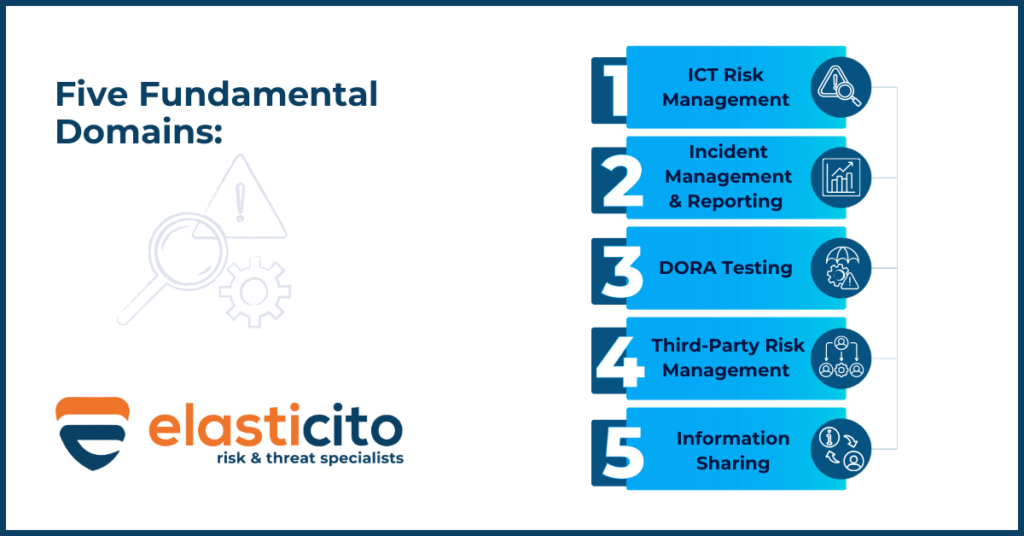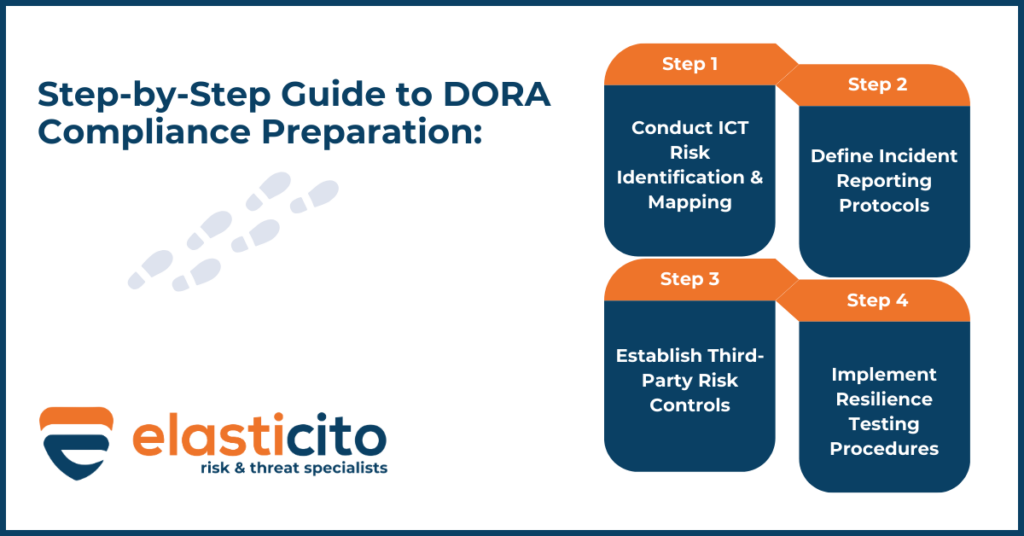The Digital Operational Resilience Act: Essential Guide – Part 1

The Digital Operational Resilience Act (DORA), effective January 2025, imposes significant cybersecurity obligations on more than 21,000 EU financial institutions. It demands robust technical safeguards, rapid incident reporting (within four hours), structured risk management and third-party oversight. This technical guide breaks down DORA’s compliance parameters and offers actionable implementation strategies for the 2025 deadline.
Understanding the DORA Digital Operational Resilience Mandate
The Digital Operational Resilience Act constitutes a paradigmatic recalibration in EU financial sector cybersecurity governance. Diverging from conventional regulatory frameworks predicated primarily on capital adequacy, DORA establishes technological resilience as a coequal determinant of financial stability in mitigating digital disruption vectors.
What DORA Means for Financial Firms in 2025
Upon full implementation on 17 January 2025, DORA will impose rigorous operational resilience parameters across over 22,000 financial entities operating within EU jurisdictions. This regulatory perimeter extends to a diverse institutional taxonomy—encompassing conventional and digital banking entities, e-money institutions, payment service providers, insurance and reinsurance undertakings, asset management firms, credit institutions and private equity operations.
DORA assigns unambiguous accountability to organisational governance structures—boards, executive leadership cadres and senior management cohorts—for comprehensive ICT risk management.
These governance bodies must:
- Formulate appropriate risk-management architectural frameworks
- Facilitate implementation and supervisory oversight of strategic risk initiatives
- Maintain current awareness regarding emergent ICT threat landscapes
Financial entities must demonstrate verifiable competencies across five fundamental domains:
- ICT Risk Management – Implementing structured methodologies to identify, protect, detect, respond to and recover from IT-related operational disruptions
- Incident Management and Reporting – Developing harmonised protocols for threat classification and notification
- Digital Operational Resilience Testing – Executing methodical assessment regimes incorporating adversarial simulation techniques
- Third-Party Risk Management – Extending resilience parameters to critical service provision relationships
- Information Sharing – Facilitating intelligence exchange regarding threat vectors and mitigation techniques

Furthermore, the regulatory framework mandates that financial institutions demonstrate appropriate governance, management and oversight mechanisms for testing protocols and critical operational resilience components.
Why DORA Is Different from Previous EU Regulations
DORA distinguishes itself from antecedent regulatory instruments through explicit targeting of ICT risks with prescriptive requirements governing management, reporting, testing and third-party supervision. While previous regulatory constructs centred predominantly on capital reserves as operational risk mitigants, DORA acknowledges that ICT incidents and operational resilience deficiencies pose systemic stability threats irrespective of capitalisation adequacy for traditional risk categories.
DORA introduces several unprecedented regulatory mechanisms:
- Implementation of a unified supervisory architecture across diverse financial market participants, ensuring methodological convergence in security practices
- Establishment of the first regulatory framework enabling financial supervisory authorities to exercise direct oversight of Critical ICT Third Party Providers (CTPPs), including Cloud Service Providers
- Specification of precise requirements governing identification, response, reporting and classification of significant ICT-related incidents—instituting enhanced risk management disciplines
DORA further distinguishes itself through heightened ambition regarding both compliance specifications and implementation chronology compared with previous regulatory instruments. Notably, DORA stipulates that advanced assessment of ICT tools, systems and processes through threat-led penetration testing must occur at minimum three-year intervals, establishing elevated standards for security assurance.
Through bridging the critical discontinuity between conventional financial regulation and digital risk governance, DORA establishes a comprehensive regulatory framework reflecting the technological dependencies characterising contemporary financial services architecture.
Step-by-Step Guide to DORA Compliance Preparation
Successful DORA compliance necessitates a systematised approach addressing each regulatory pillar within the framework’s architectural design. Financial institutions must establish formalised procedural mechanisms that conclusively demonstrate their capability to prevent, identify and remediate ICT-related operational disruptions. The following structured implementation pathway delineates crucial actions required for attaining DORA regulatory conformity.
Step 1: Conduct ICT Risk Identification and Mapping
Foundational DORA compliance commences with exhaustive ICT risk identification procedures. Financial entities must identify, classify and properly document all ICT business functions, information assets and their interdependencies. This cartographical exercise constitutes the elemental underpinning of institutional operational resilience architecture.
Essential activities include developing and maintaining granular inventories encompassing:
- All information assets and ICT systems, including geographically distributed infrastructure components
- Network resources and hardware equipment configurations
- Operational processes contingent upon ICT third-party service providers
- Legacy ICT systems requiring specialised risk mitigation protocols
Subsequently, execute cyclical risk assessment protocols—minimally on annual periodicity—with additional assessment iterations following substantive infrastructural modifications. DORA mandates further require organisations to document information asset configurations and architectural interconnections between discrete ICT infrastructure components.
Step 2: Define Incident Reporting Protocols
DORA establishes prescriptive chronological parameters for incident notification that mandate precisely defined procedural frameworks.
Financial institutions must report significant ICT-related incidents to designated regulatory authorities according to the following temporal schedule:
- Initial notification: Within 4 hours after classification or 24 hours after detection
- Intermediate report: Within 72 hours following initial notification submission
- Final report: Within one month after intermediate report, incorporating comprehensive root cause analytical documentation
These notification submissions must contain sufficient evidentiary detail enabling authorities to determine incident materiality and evaluate potential cross-jurisdictional implications. Furthermore, when significant ICT-related incidents impact client financial interests, institutions must inform affected parties expeditiously and articulate remedial measures implemented to mitigate adverse consequences.
Step 3: Establish Third-Party Risk Controls
Third-party risk governance constitutes a fundamental component within DORA’s regulatory architecture. Financial entities must execute thorough risk evaluations regarding ICT third-party providers, encompassing operational, concentration and systemic risk dimensions.
Prior to provider engagement, implement comprehensive due diligence methodologies assessing each provider’s alignment with institutional security frameworks. Contractual arrangements with third-party providers must incorporate detailed provisions regarding risk management expectations and explicit termination rights for regulatory non-compliance scenarios.
Additionally, maintain a comprehensive register documenting all ICT third-party providers and services, including contractual particulars, service criticality classifications and risk assessment determinations. Develop formalised and validated exit strategies enabling operational resilience maintenance during critical service provider unavailability contingencies.
Step 4: Implement Resilience Testing Procedures
The culminating implementation component involves establishing comprehensive testing programmes verifying operational resilience capabilities. Under DORA, financial entities must deploy diverse assessment methodologies, testing protocols and analytical instruments.
Requisite testing modalities include vulnerability assessments, network security evaluations, architectural gap analyses, source code reviews and threat-led penetration testing (TLPT) exercises. Notably, advanced testing methodologies such as TLPT must be executed at minimum three-year intervals for critical systems.
All testing activities require execution by independent parties—whether internal or external—possessing adequate resources and absent conflicts of interest. Following assessment completion, establish structured processes to prioritise, classify and remediate identified vulnerabilities, whilst conducting appropriate testing regimes for all critical ICT systems minimally on annual periodicity.
Through methodical implementation of these four procedural domains, financial institutions can establish robust foundational frameworks supporting DORA compliance antecedent to the January 2025 regulatory enforcement deadline.

Conclusion
In conclusion, this guide illuminates the foundational pillars of the Digital Operational Resilience Act, underscoring its significance as a paradigm shift in EU financial sector regulation. The Act’s emphasis on proactive risk management, stringent incident reporting, robust third-party oversight and rigorous testing mandates a fundamental reassessment of operational resilience strategies for over 21,000 financial entities. As the January 2025 deadline looms, the imperative for comprehensive preparation is undeniable. To navigate these complexities and ensure a seamless path to DORA compliance, financial firms need expert guidance and tailored solutions.
Discover how Elasticito can empower your organisation to not only meet but exceed DORA’s demanding requirements. Stay tuned for Part 2, where we will delve deeper into advanced implementation strategies and address specific challenges in achieving digital operational resilience.
